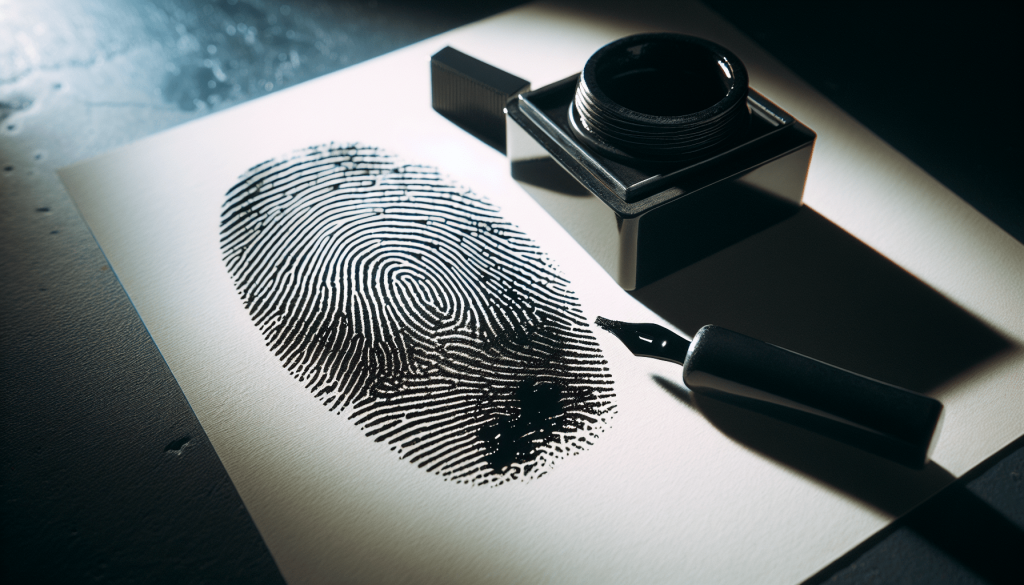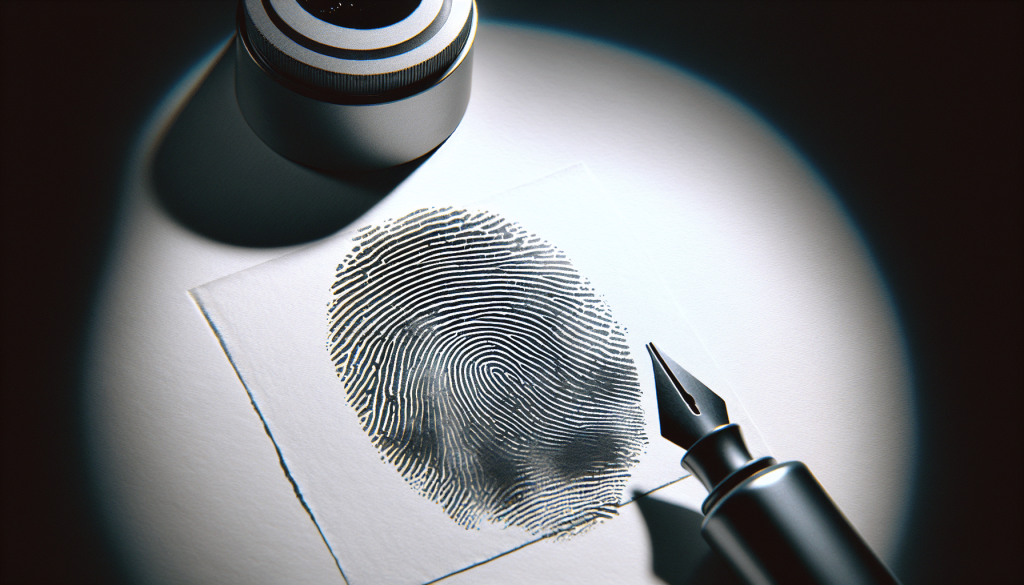Have you ever wondered do ink fingerprints require a trained professional to capture them? Whether it’s for legal, personal, or professional reasons, understanding the nuances of ink fingerprinting can save you time, stress, and possibly even money. Let’s unravel this mystery together.
Listen to Our Podcast Episode below

What Are Ink Fingerprints?
Ink fingerprints are impressions of the intricate patterns found on your fingertips, captured using ink on a paper surface. These patterns are unique to every individual, making them a reliable method of identification. Various scenarios, including background checks, criminal investigations, and certification processes, may require you to provide ink fingerprints.
Brief History and Uses
Ink fingerprinting has been around for over a century, playing a crucial role in law enforcement and personal identification. Historically, it served as the primary method for individual identification before the advent of electronic databases and biometric technologies.
Major Uses of Ink Fingerprints
| Application | Description |
|---|---|
| Law Enforcement | Aid in crime scene investigations and background checks |
| Personal Identification | Verify identity for legal documentation and applications |
| Security Clearances | Required for governmental and high-security roles |
Do You Need a Professional?
The essential question: do you need a professional to capture your ink fingerprints? The answer isn’t straightforward and depends on several factors discussed below.
Legal Requirements
In many countries, particularly for legal and official purposes, ink fingerprints must be captured by a certified individual or agency. This ensures the authenticity and accuracy of the prints, which is critical when used as official documentation.
Accuracy and Quality
Accuracy is paramount when capturing ink fingerprints. Misaligned, smudged, or incomplete prints may be rejected, causing delays and additional costs. Professionals are trained to take clear, accurate prints, ensuring that your fingerprints meet the required standards.
Required Materials
Capturing high-quality ink fingerprints requires specific materials:
- Ink Pad: Specialized ink designed for fingerprinting.
- Fingerprint Cards: Made from heavy cardstock to absorb ink without smearing.
- Rollers and Holders: Sometimes used for more precise prints.
While these tools are readily available, a professional’s experience can ensure they are used effectively.
DIY Fingerprinting: Pros and Cons
Taking your ink fingerprints at home or in a non-professional setting may seem convenient, but it comes with its own set of benefits and drawbacks.
Pros
- Convenience: Capture fingerprints at your own pace without scheduling an appointment.
- Cost-Effective: Save on fees that professionals charge for fingerprinting services.
Cons
- Quality Issues: Risk of poor quality prints that may be rejected by the requesting agency.
- Lack of Expertise: Possibility of errors due to lack of training or experience.
- Time-Consuming: You may spend additional time redoing prints if initial attempts are unsatisfactory.

Steps to Capture Ink Fingerprints
If you decide to capture your own ink fingerprints, adhering to the following steps can improve your chances of success.
Preparation
- Clean Hands: Wash your hands thoroughly to remove oils and dirt, ensuring clearer prints.
- Materials Ready: Gather all necessary materials: ink pad, fingerprint cards, and wipes (for cleaning fingers after printing).
Capturing the Prints
- Ink Application: Lightly press your fingertips on the ink pad. Ensure even coverage without over-inking.
- Rolling Prints: Roll each finger from nail edge to nail edge on the fingerprint card. Practice makes perfect; avoid pressing too hard.
- Label and Review: Accurately label the prints and inspect for clarity. Redo any prints that appear smudged or incomplete.
Post-Capture
- Clean Up: Use wipes to clean off the ink from your fingers.
- Storage: Store completed fingerprint cards in a safe, dry place until submission.
Common Issues and Troubleshooting
Even with careful preparation, issues can arise. Here’s how to handle some common problems.
Smudged Prints
A common issue, smudged prints often result from pressing too hard or uneven ink application. Practicing a gentle, consistent rolling motion can help prevent this.
Partial Prints
Failure to cover the entire fingertip surface can result in incomplete prints. Ensure full and even contact with the ink pad and the fingerprint card.
Rejection and Resubmission
If your fingerprints are rejected, review the feedback given, and focus on correcting specific issues like smudging or incomplete coverage. Re-capture and resubmit following the recommended standards.
When to Seek Professional Help
While DIY methods are viable in some contexts, knowing when to seek professional assistance can save you from unnecessary stress and wasted efforts.
Official Documents and Certifications
For tasks that involve legal documentation, such as immigration papers, professional help ensures compliance with stringent standards, which can prevent delays or legal issues.
High-Security Clearances
Jobs or roles requiring high-security clearances often demand fingerprinting by accredited professionals, ensuring that integrity is maintained throughout the process.
Persistent Issues
If you’ve tried capturing your fingerprints several times without success, seeking professional help can resolve the issue quickly and efficiently.
How Professionals Capture Ink Fingerprints
Understanding the professional process can provide peace of mind and appreciation for their expertise.
Training and Certification
Professionals often undergo rigorous training, focusing on the techniques and standards set by governing bodies. This training ensures they can capture high-quality prints consistently.
Specialized Equipment
Professionals use high-quality, often specialized, equipment, ensuring that your fingerprints are captured with the utmost precision and clarity. This equipment can include advanced ink pads, holders, and rollers.
Standardized Procedures
Adhering to standardized procedures helps maintain consistency and accuracy across prints. These standards are essential in ensuring that your fingerprints are usable for their intended purpose.
Choosing a Professional Service
When selecting a professional fingerprinting service, consider the following factors to ensure you receive the best possible service.
Accreditation and Reviews
Verify that the service is accredited by relevant authorities. Reviews and testimonials can also provide insights into the quality of service you can expect.
Cost and Convenience
While professional fingerprinting services may come at a higher cost, the convenience and assurance they provide often justify the expense. Consider the proximity of the service and their availability to align with your schedule.
Additional Services
Some providers offer additional services like digital fingerprinting, background checks, and identity verification. These can be beneficial if you need multiple services.
Pros and Cons of Professional Fingerprinting Services
While professionals provide unmatched expertise, it’s essential to weigh the benefits against potential drawbacks.
Pros
- Expertise: High-quality, accurate prints that meet all necessary standards.
- Efficiency: Quick and streamlined process, minimizing the need for reprints.
- Assurance: Compliance with all legal and procedural requirements.
Cons
- Cost: Higher initial cost compared to DIY methods.
- Accessibility: May require appointments and travel to the nearest service location.
Conclusion: Making the Right Choice
The decision to capture ink fingerprints yourself or seek professional help depends on your specific needs and circumstances. While DIY methods offer convenience and cost savings, professional services provide expertise, accuracy, and compliance with stringent standards. Evaluate your situation and choose the option that best meets your requirements, ensuring that your fingerprinting process is smooth and successful.
Your journey to understanding ink fingerprinting doesn’t end here. Whether you choose to master the DIY approach or rely on professional services, being informed is your best tool for success.

